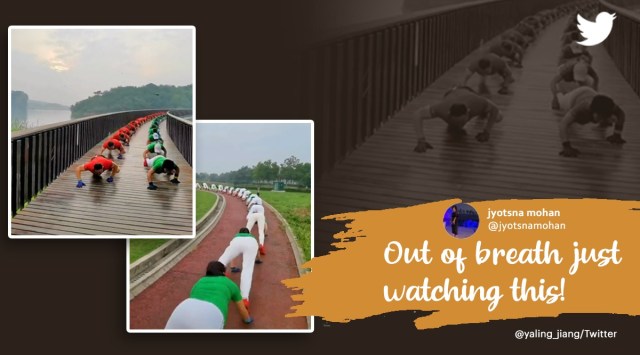Robot runs 100 metre in 24 seconds, makes world record
Cassie created a Guinness World Record for the fastest 100-metre run by a bipedal robot.

Cassie, a robot made by the Oregon State University College of Engineering and an OSU spinout company Agility Robotics, created a Guinness World Record for the fastest 100-metre run by a bipedal robot.
Cassie completed the run in 24.7 seconds on May 11, 2022. While the record was made months ago, the video of Cassie’s run was recently shared by the Oregon University on its website on September 23. Soon, the video began circulating across social media platforms.
On Wednesday, the video of Cassie’s record-making run was posted on Twitter by journalist Dan Tilkin (@DanTilkinKOIN6) where it got over 34,000 views. The video prompted netizens to jokingly speculate about the future where robots will take over the world. A Twitter user wrote, “So glad to see that robotics scientists/engineers are working diligently on designing ways to help them OUT RUN US.” Another person posted, “Can we make it mandatory that all robot engineers be required to watch the terminator films.”
Robot World Record: Not sure whether to be inspired or terrified? https://t.co/xevauknkpV pic.twitter.com/2SlycGFsaX
— Dan Tilkin (@DanTilkinKOIN6) September 27, 2022
Terminator in progress…🤦♂️ https://t.co/5WqtemrhfP
— David Bender (@rational_david) September 27, 2022
i’m not really inspired or terrified or impressed by this stuff. it registers to me about the same as if they made a car that drives fast https://t.co/M5egMCbXhr
— J.W. Clementine (@boredgamelad) September 27, 2022
Let’s go with terrified. We’re doomed.
— Jeff Mazur (@OldenBitterman) September 27, 2022
Amazing. But can’t end well for humanity
— Patriotic Dissent (@EastHillRoad) September 27, 2022
In a few years… pic.twitter.com/dQVbqA1guG
— Biff plays hockey (@Biffplayshockey) September 27, 2022
Can we make it mandatory that all robot engineers be required to watch the terminator films.
— Anthony (@Anthony55785622) September 27, 2022
One day we’ll look back and think the signs were all there.
— Mike Bunting (@mikebunting442) September 27, 2022
In an article published in OSU Today, Alan Fern, a professor of artificial intelligence at Oregon State University, said the major challenge in executing Cassie’s run was to make sure the robot started the run from a free-standing position and then returned to the same position without falling.
Explaining this further he said, “Starting and stopping in a standing position are more difficult than the running part, similar to how taking off and landing are harder than actually flying a plane.”
- 01
- 02
- 03
- 04
- 05































